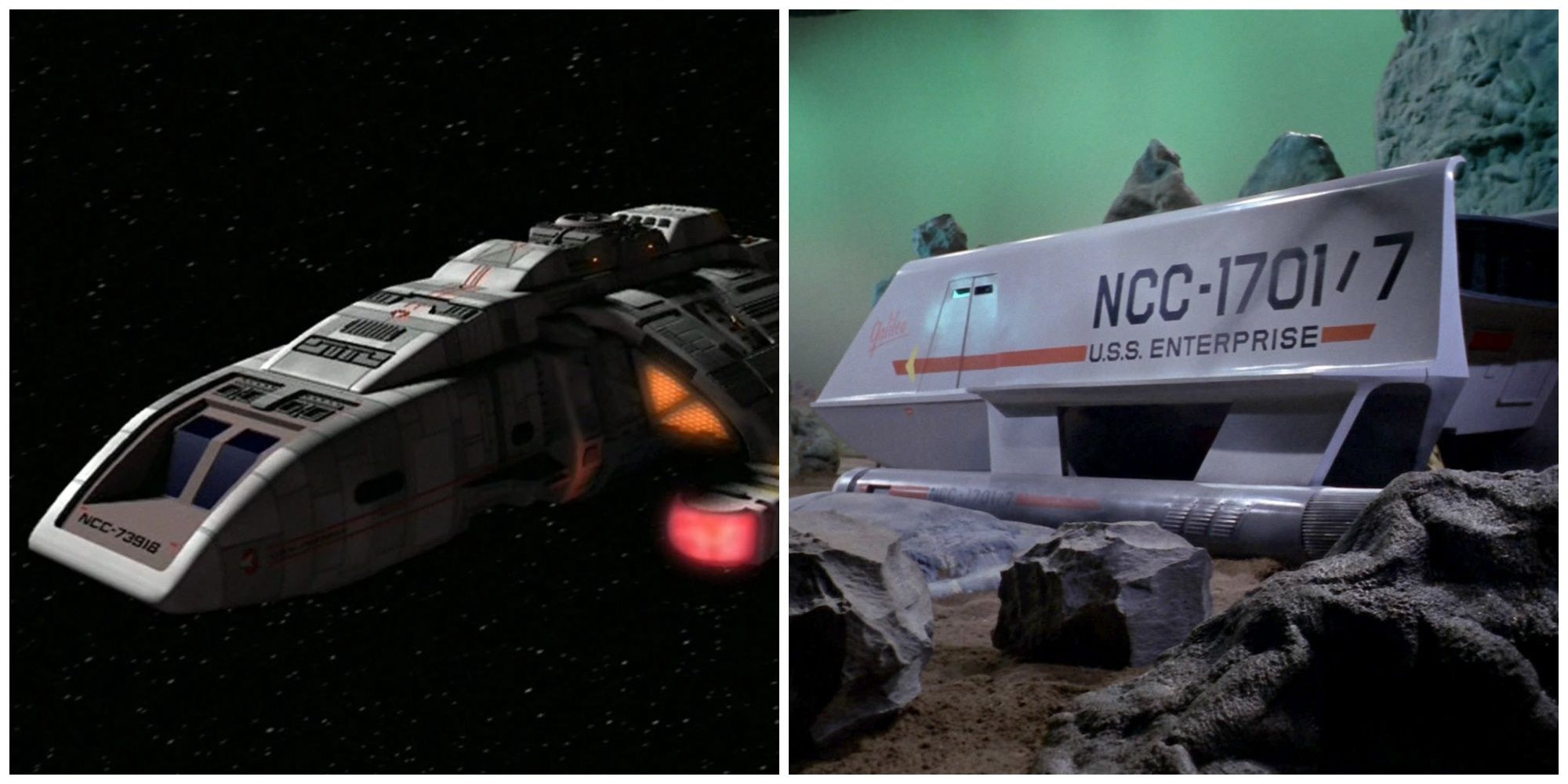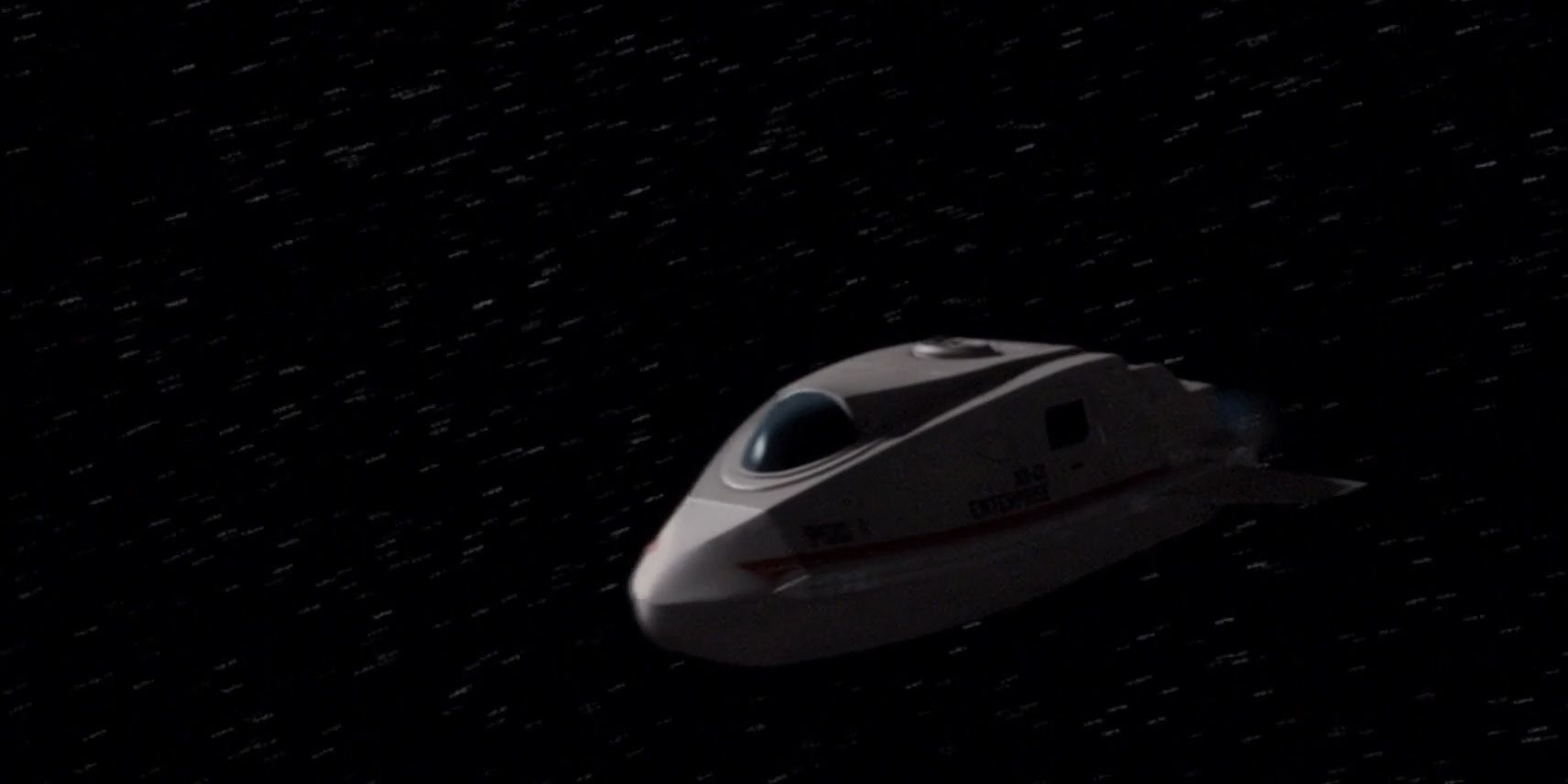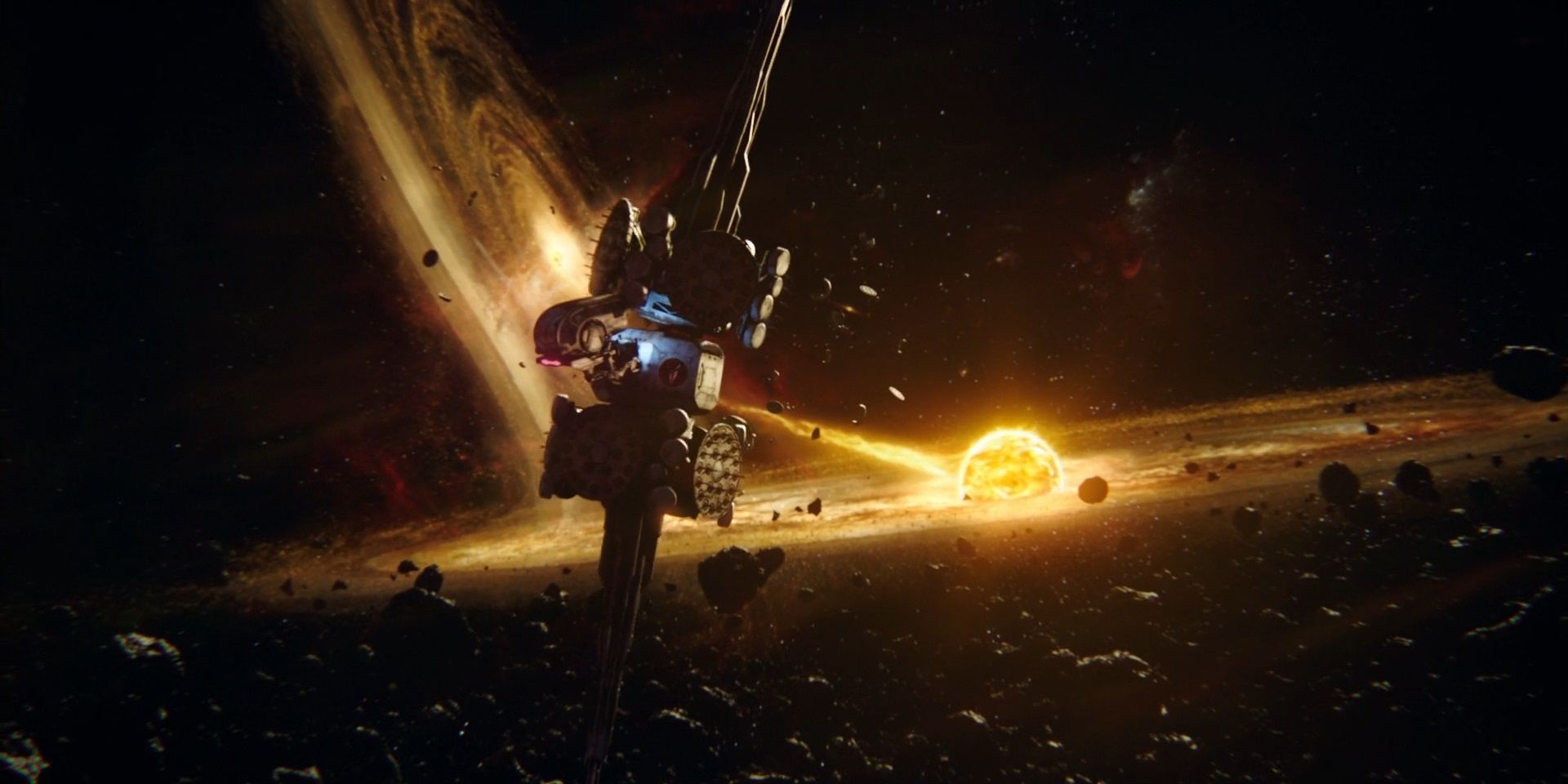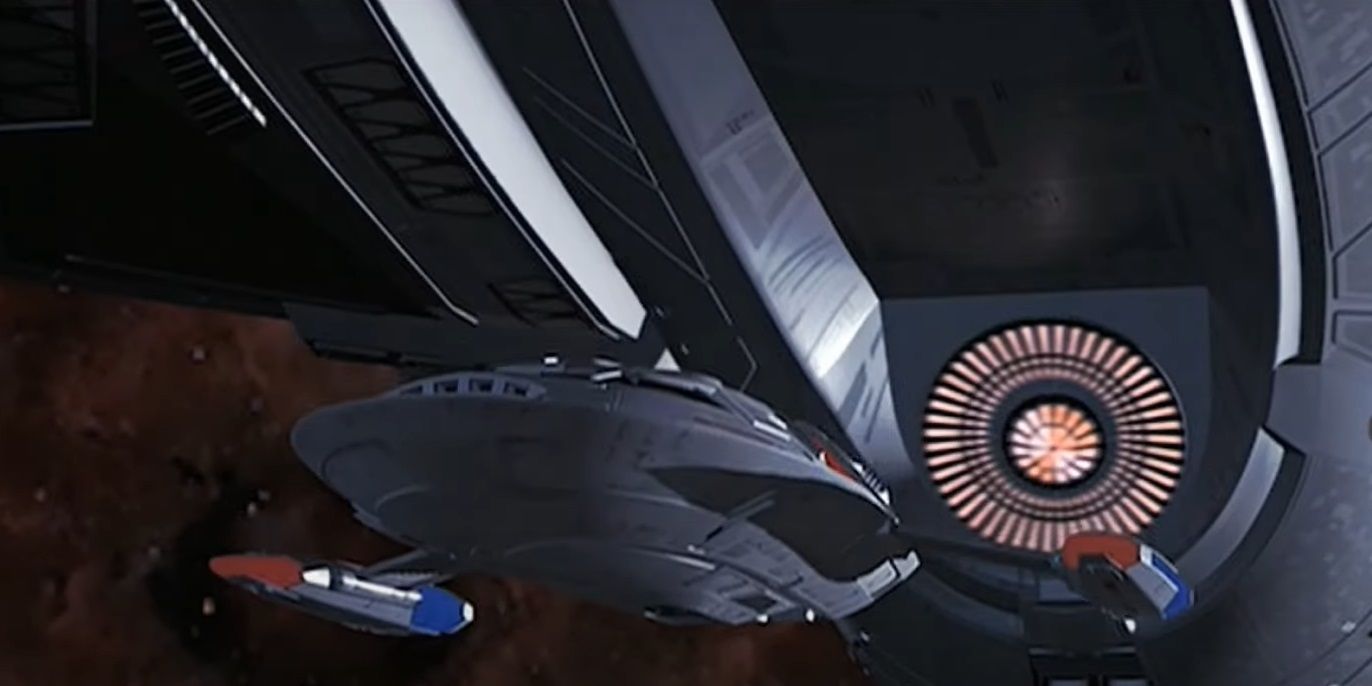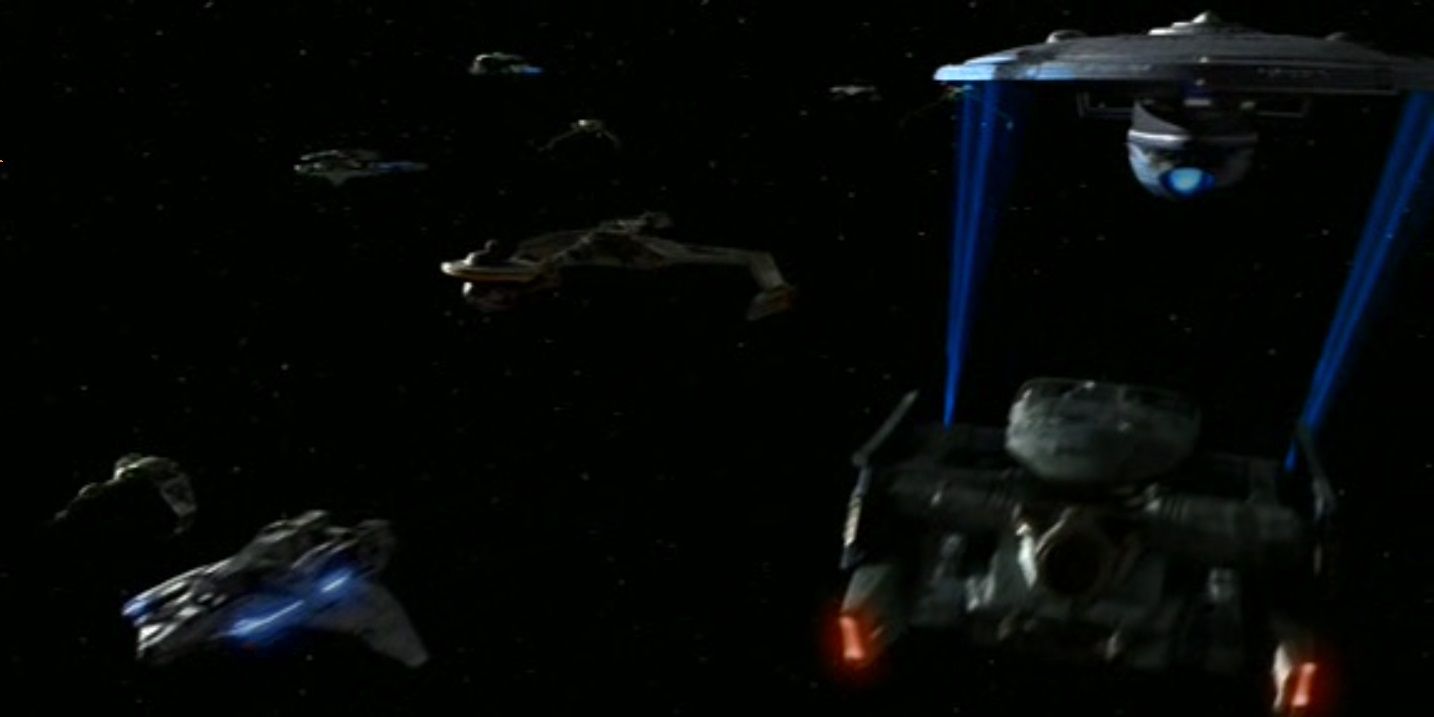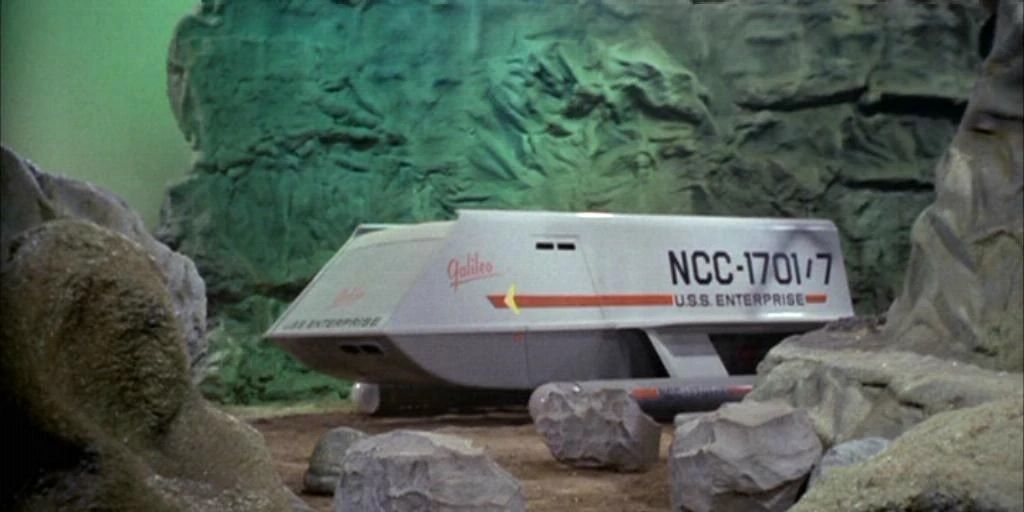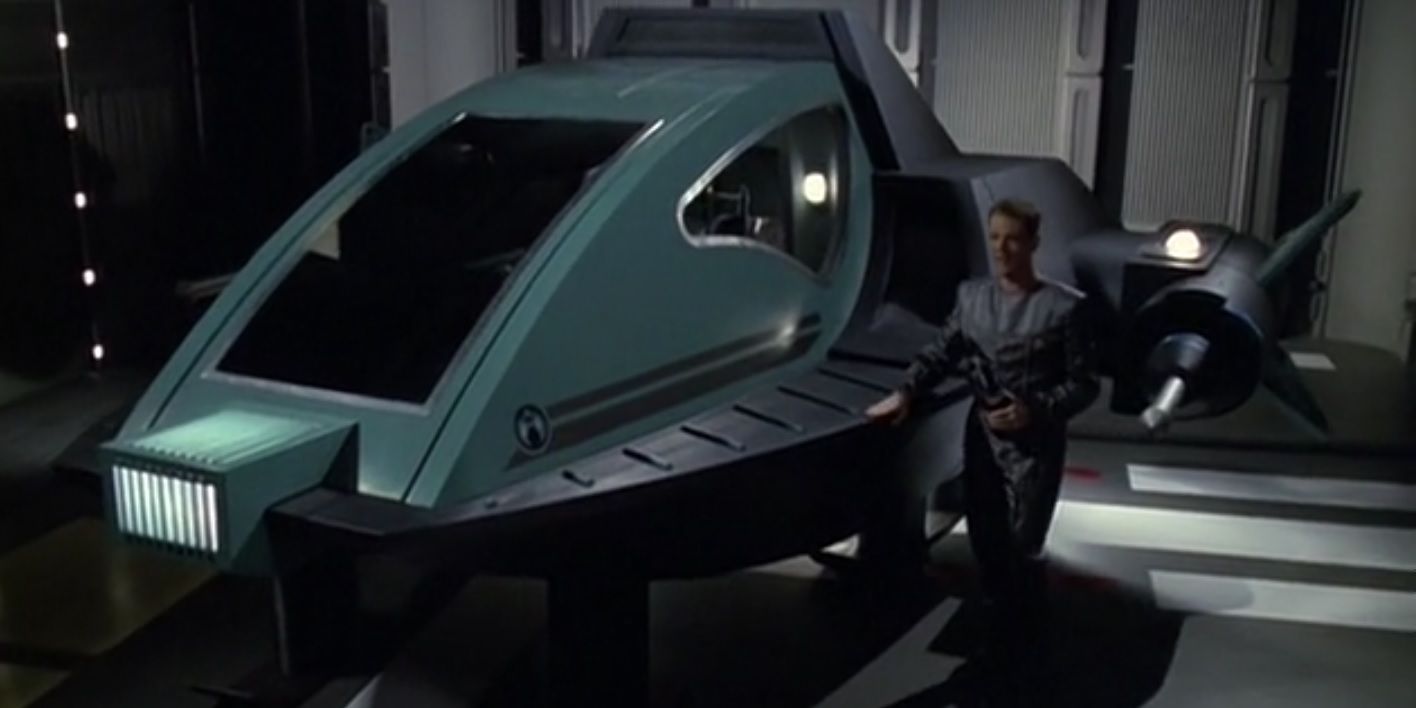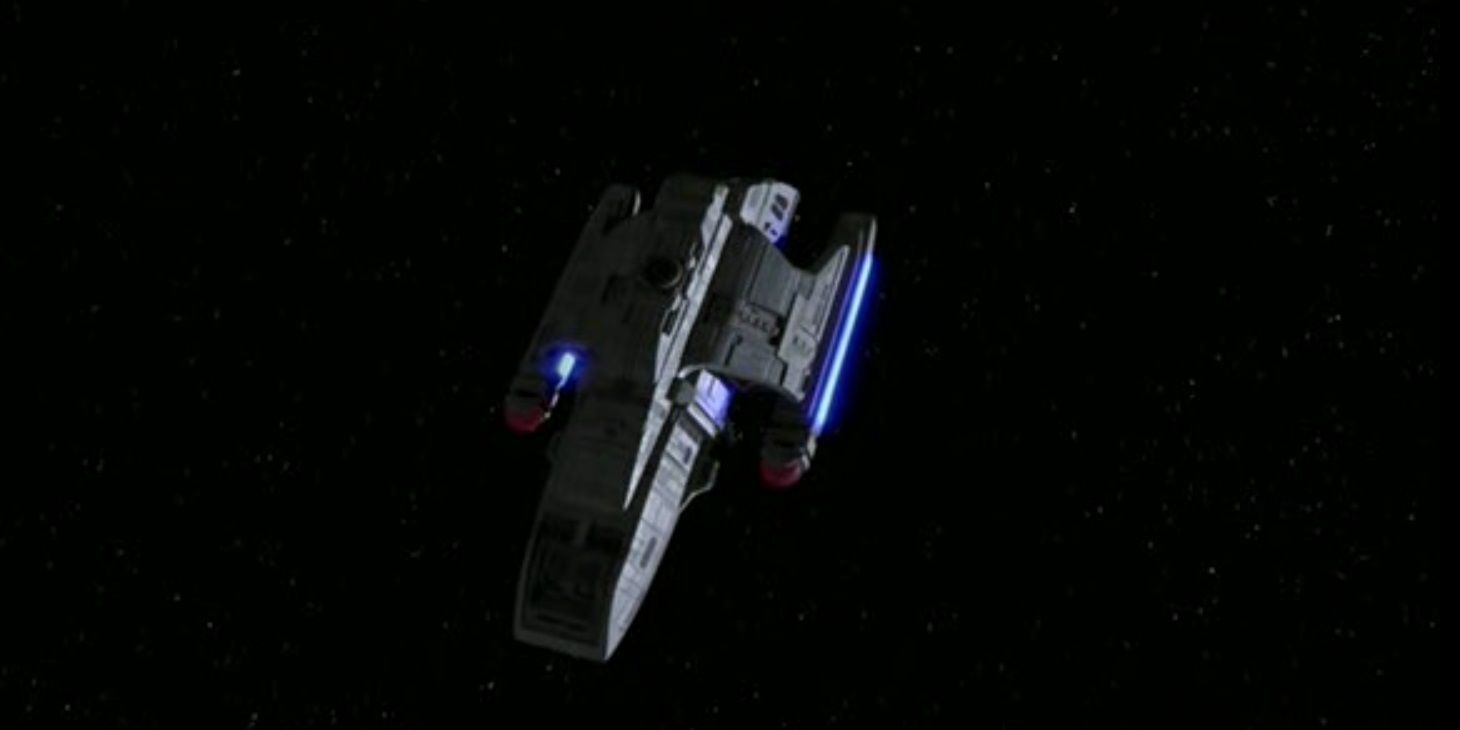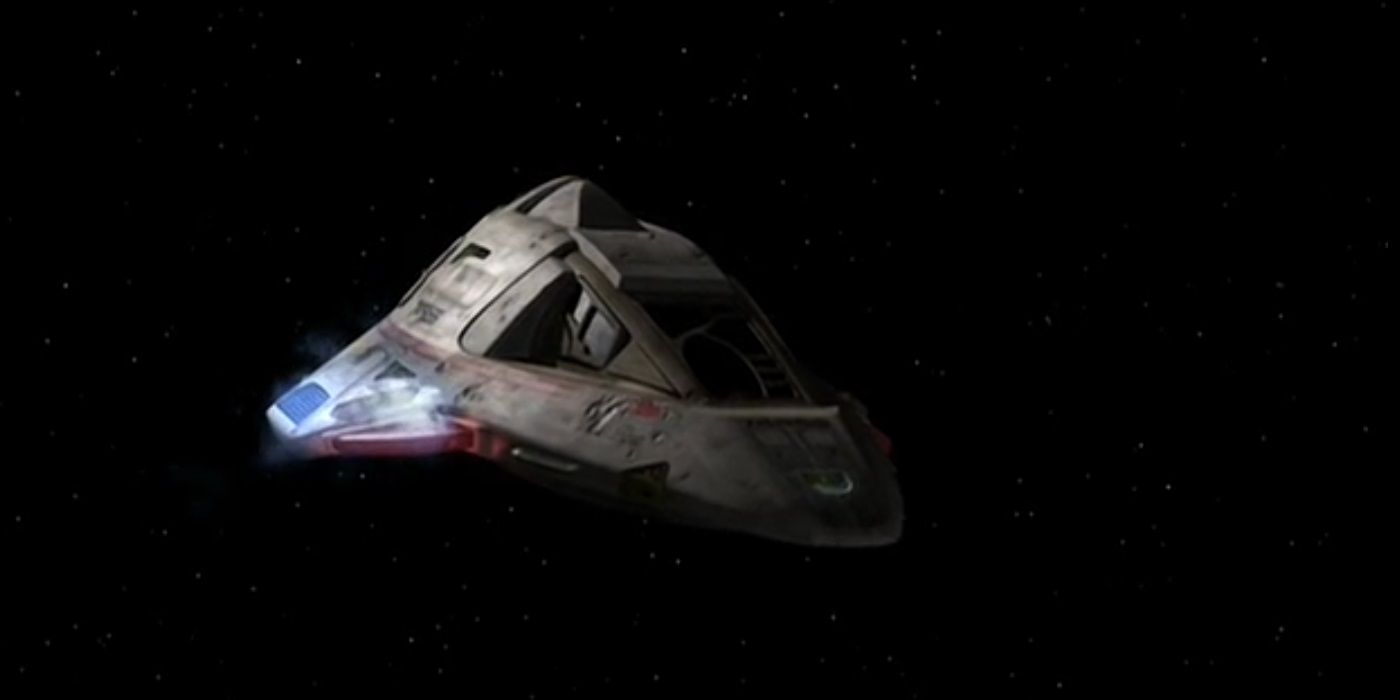Star Trek is known for its bumpy-headed aliens, breathtakingly powerful starships, and occasionally hammy performances. The world of the franchise is a near utopia, albeit one that is often threatened by forces both internal and external. All material needs are provided for by replicators, amazing machines capable of creating matter from thin air.
While many fans are drawn to the fantastical technologies and massive, shiny starships, the great achievements of the franchise's heroes would not be possible without the smaller, more mundane auxiliary ships that keep the Federation running. From shuttlepods to starship tugs, these vessels are the unsung heroes of the world of Star Trek.
8 Shuttlepod One
When the Enterprise NX-01 began its exploratory mission in 2151, neither Captain Archer nor his crew had any idea what was waiting for them out in the depths of space. Their early voyages would bring them into contact with time-traveling terrorists and holographic ghost towns, but one of the greatest threats was posed by space itself.

Star Trek: 8 Most Catastrophic Federation Defeats
Star Trek's Federation has endured several terrible defeats during the series' run, and the following are easily the worst.
The Enterprise was presumed destroyed in an asteroid field several months into its mission, leaving crew members Trip Tucker and Malcolm Reed stranded aboard one of its auxiliary craft, Shuttlepod One. With no warp drive or long-term life support, it seemed that the duo were fated to die. Although they were rescued, the incident demonstrated how far humanity still had to go when it came to designing suitable shuttles to explore the final frontier.
7 Worker Bee
Although variations on the shuttle made up most of Starfleet's collection of auxiliary craft, there were times when a nimbler, more dexterous vessel was required. The worker bee was a small sub-light vessel designed to carry a single operator. Its design was simple: a spherical pod to carry the pilot, connected to a pair of manipulator arms that were operated via the use of a glove.

Star Trek: 8 Best Starfleet Ships Of The 23rd Century
Which one of Star Trek's 23rd century starships is the best of the bunch?
The worker bee's design made it perfect for carrying out deep space maintenance and repair. In 2256, a worker bee was deployed to service a damaged interstellar relay. Centuries later, worker bees were used to repair and refit the USS Discovery after its voyage into the far future.
6 Captain's Yacht
The Captain's yacht was a large auxiliary craft designed for use by a starship's commanding officer. Many starships carried a yacht, including the Galaxy-class USS Enterprise-D, the Intrepid-class USS Voyager, and the California-class USS Cerritos. Despite its ubiquity, the captain's yacht was rarely used. For instance, neither the Enterprise-D nor Voyager ever deployed theirs on-screen.
The most prominent use of the captain's yacht occurred in 2375, when the vessel stored aboard the Sovereign-class USS Enterprise-E was used to ferry the starship's crew to the Ba'ku's planet. Judging by its nacelles, this yacht appeared to be warp-capable, although it was also able to maneuver within an atmosphere.
5 Federation Tug
Although the Federation boasted an impressive array of ultra-advanced starships, these vessels were not immune to technical faults. The Federation tug, a futuristic tow-truck, was deployed on multiple occasions throughout the superpower's history. In 2257, a pair of tugs hauled the damaged USS Enterprise to a nearby starbase for repairs.
Tugs played a key role during the Dominion War of 2373–2375. Federation vessels damaged in the far-reaching conflict relied on these small, warp-capable vessels to take them away from the frontline after major battles. Despite their size, tugs were capable of hauling massive loads. In 2374, the Excelsior-class USS Frederickson was towed to safety by a single tug.
4 Shuttlecraft Galileo
The Galileo was one of several auxiliary craft carried by the USS Enterprise during Captain Kirk's first five-year mission. In 2267, the shuttle took part in an exploratory mission led by the Vulcan Spock. The mission's goal was to investigate a quasar, but the shuttle instead crash-landed on a planet populated by large, aggressive aliens.

Star Trek: 10 Greatest Sacrifices, Ranked
Fans of the Star Trek franchise will remember these heroic and great sacrifices for a long time.
After it became apparent that the Galileo lacked the fuel needed to carry the entire crew back up to orbit, Spock was forced to decide who to abandon on the planet. His logical approach caused conflict with others in the landing party, although Spock was eventually able to signal for help by igniting the Class F shuttlecraft's fuel reserves while in orbit, attracting the attention of the Enterprise.
3 "Alice"
The USS Voyager encountered many strange and dangerous things during its trip home through the Delta Quadrant, from the Klingon-like Kazon to the imposing Borg. In 2376, the starship arrived at an alien junkyard, where helmsman Tom Paris purchased an apparently haunted alien shuttle.
The shuttle, Alice, hosted an apparently nefarious AI persona, capable of manipulating the craft's pilot via a neurogenic interface. Alice took over Tom Paris and nearly forced him to fly to his death, but intervention from the USS Voyager saved the reckless pilot's life. The encounter demonstrates that Star Trek is not afraid to dabble in the supernatural, despite its broadly scientific remit.
2 Danube-Class Runabout
Several Danube-class runabouts were stationed at Deep Space Nine after the Federation took control of the former Cardassian ore refinery in 2369. These small vessels were more versatile than standard shuttlecraft, and could be used for exploration over greater distances and for longer periods. As such, they were important in the early exploration of the Gamma Quadrant.

Star Trek: Every Faction In The Dominion War
The Dominion War is one of the largest-scale conflicts ever portrayed in the Star Trek universe, and there were several key groups involved.
The Danube-class runabout could reach Warp 5, carried multiple phaser banks and a torpedo launcher, and was equipped with a transporter. As such, the auxiliary vessel provided much of a starship's utility in a far smaller (and presumably cheaper) package. One notable runabout was the Rubicon, which was miniaturized by a subspace compression anomaly in 2374. Despite its diminutive form, the Rubicon was able to defeat a boarding party of Jem'Hadar who had captured the USS Defiant.
1 The Delta Flyer
The Delta Flyer was a specialized shuttlecraft built aboard the USS Voyager during the starship's seven-year journey home from the Delta Quadrant. Captain Janeway and her crew realized that the standard issue shuttles carried aboard Voyager were ill-equipped to deal with the rigors of the Delta Quadrant, so she authorized the construction of the Delta Flyer for use in extreme environmental conditions.
The Delta Flyer demonstrated its resilience in a number of extreme scenarios. Its maiden voyage saw it enter the atmosphere of a gas giant, while in 2375 the auxiliary vessel traversed the watery depths of an ocean world. Although the original Delta Flyer was destroyed, a replica participated in and won an alien spaceship race in 2377, demonstrating that the specialized shuttle offered speed as well as strength.

